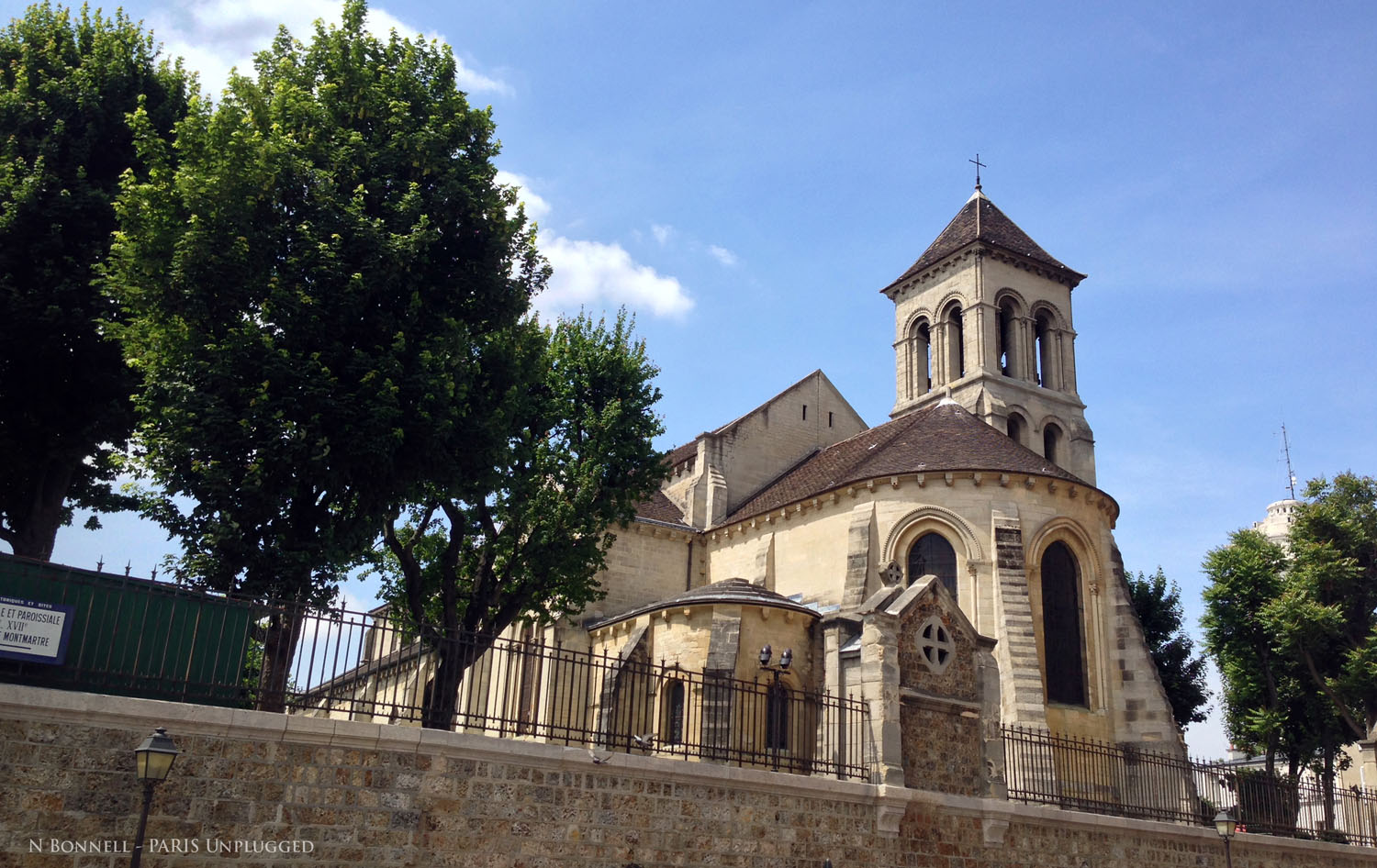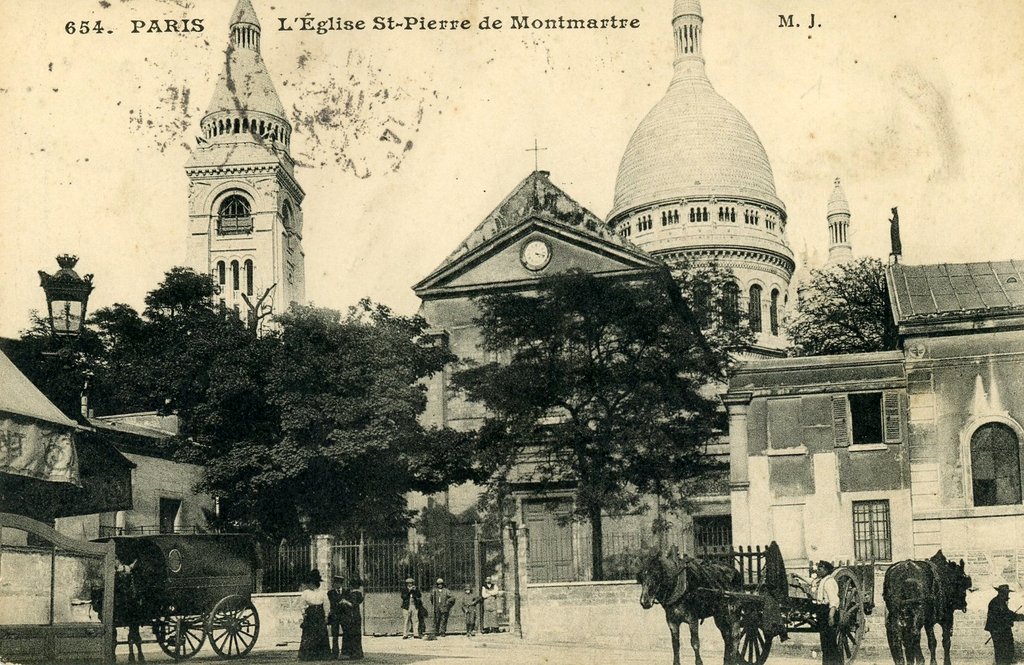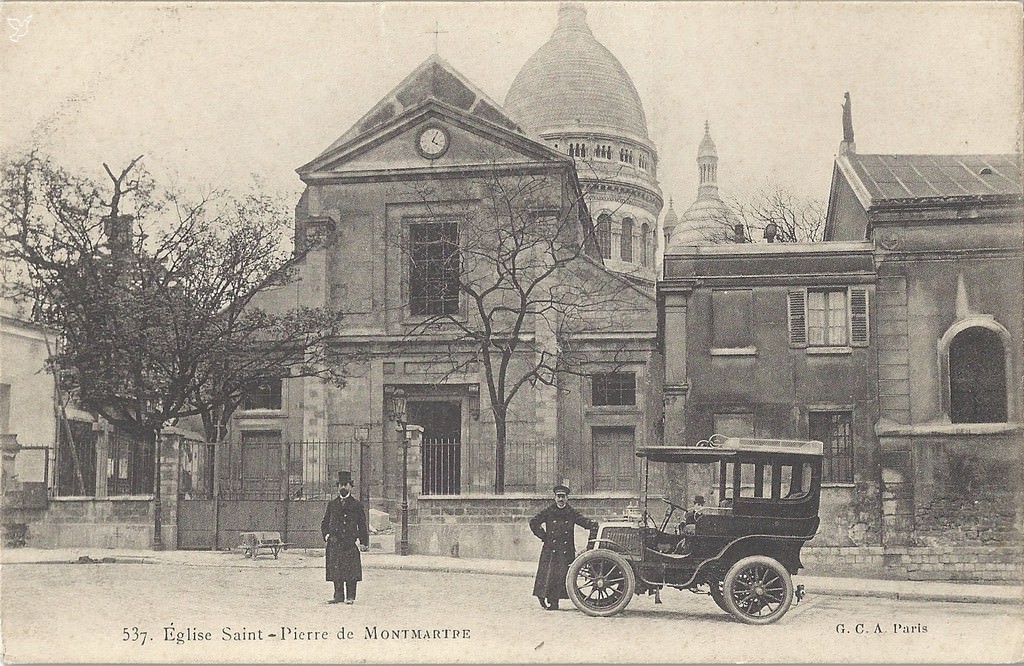Cet article fut publié pour la première fois en août 2014 sur le blog du Terrass hôtel – véritable porte d’entrée du village de Montmartre.
Saint Pierre de Montmartre est aujourd’hui considérée comme la plus ancienne de la Capitale. Sa construction débutera en 1133, année au cours de laquelle Louis VI ordonnera la création d’un ensemble monastique en haut de la Butte. La faible urbanisation de Montmartre imposera la création de deux églises en ses murs. La première, Saint Pierre, sera consacrée aux paroissiens, tandis que Saint-Denis, la seconde, sera dédiée aux bénédictines. Un mur séparera les deux paroisses. Déplacé à plusieurs reprises, il faudra attendre 1900 pour le voir disparaître.
Quelques siècles plus tard, Henri IV, contemplant la Capitale depuis le porche de cette église, lancera cette phrase célèbre : «Paris vaut bien une messe !».
L’étonnante longévité de ce bâtiment, va de pair avec les importantes transformations qu’il subit au fil des siècles. L’Église telle qu’elle apparaît aujourd’hui reste le fruit d’un étonnant mélange architectural. Une grande partie de l’intérieur fut repensé au XVe siècle. L’extérieur et la façade seront retravaillées à la fin du XVIIIe siècle. Un premier clocher sera ajouté pour l’occasion. Sa hauteur fera l’objet d’un vif débat tant l’Abbesse ne souhaitait pas qu’il dépassât celui de l’abbaye.Les paroisses étant séparées, un autre clocher sera construit pour les habitants de Montmartre vers 1697. Si les révolutionnaires détruiront le premier, Chappe profitera du second pour installer son télégraphe jusqu’en 1844. Un incendie la fera disparaître cette tour en 1866.
Le jardin jouxtant l’église abrite une magnifique représentation de la crucifixion de Jésus et des deux larrons installée en 1833. Au cours de la seconde moitié du XIXe siècle, l’endroit qui avait échappé aux affres de la Révolution, était très détérioré. Entre temps, les travaux de construction du Sacré Coeur furent entrepris. Ce nouvel édifice avait besoin de place et la destruction de Saint Pierre sera envisagée.
Une restauration sera finalement décidé en 1897 sous l’impulsion du peintre Willette et d’un groupe de dessinateurs, bien décidés à ne pas laisser écraser leur village sous le poids de cette nouvelle Basilique. C’était là une jolie façon de jouer un «bon tour» à ce projet dont la mise en oeuvre avait crée une violente polémique. Les travaux de rénovation de Saint-Pierre s’étalèreront entre 1900 et 1908. Un nouveau clocher sera ajouté pour l’occasion. En 1949, de nouveaux chantiers mirent à jours d’étonnantes découvertes médiévales parmi lesquelles des sarcophages et fragments d’objets d’époque.
.
Today, the Church of St Pierre is considered to be the oldest in the capital. Its construction began in 1133, the year that Louis VI ordered the creation of a monastic centre on the hill of Montmartre. The beginnings of urbanisation in Montmartre necessitated the creation of two parish churches within its limits. The first, St. Pierre, was dedicated to the parishioners, while the second, St. Denis, was reserved for the Benedictines. A wall separated the two parishes. Moved several times, this wall did not entirely disappear until the year 1900.
The parishes being separate, another bell tower was constructed by the inhabitants of Montmartre in about 1697. Though the first was destroyed by the Revolutionaries, the French inventor Claude Chappe made good use of its replacement to install his ‘telegraph machine’ in until 1844. The second tower was burned down in a fire in 1866.
The garden adjoining the church harbours a magnificent representation of the crucifixion of Jesus and the two thieves dating from 1833. During the second half of the 19th century, the site – having escaped the worst of the Revolution – had considerably deteriorated. In the meantime, the construction work for the Sacré Coeur had begun, and the church of St. Pierre was earmarked for Demolition to make room for the new edifice.
The restoration works on St. Pierre took place between 1900 and 1908, and included a brand new bell tower. In 1949, further restoration uncovered some extraordinary medieval discoveries, including sarcophagi, and various fragments of objects dating from the original building’s construction.
Cet article fut publié pour la première fois en août 2014 sur le blog du Terrass hôtel – véritable porte d’entrée du village de Montmartre.






Une réponse
Besso
“tant l’Abbesse ne souhaitait pas qu’il dépassa”? J’apprécie que vous réutilisiez ce temps essentiel qu’est le subjonctif imparfait (eh oui, sinon, l’Abbesse n’est toujours pas morte); j’eus d’autant plus apprécié que vous l’écrivassiez correctement: “qu’il dépassât”.